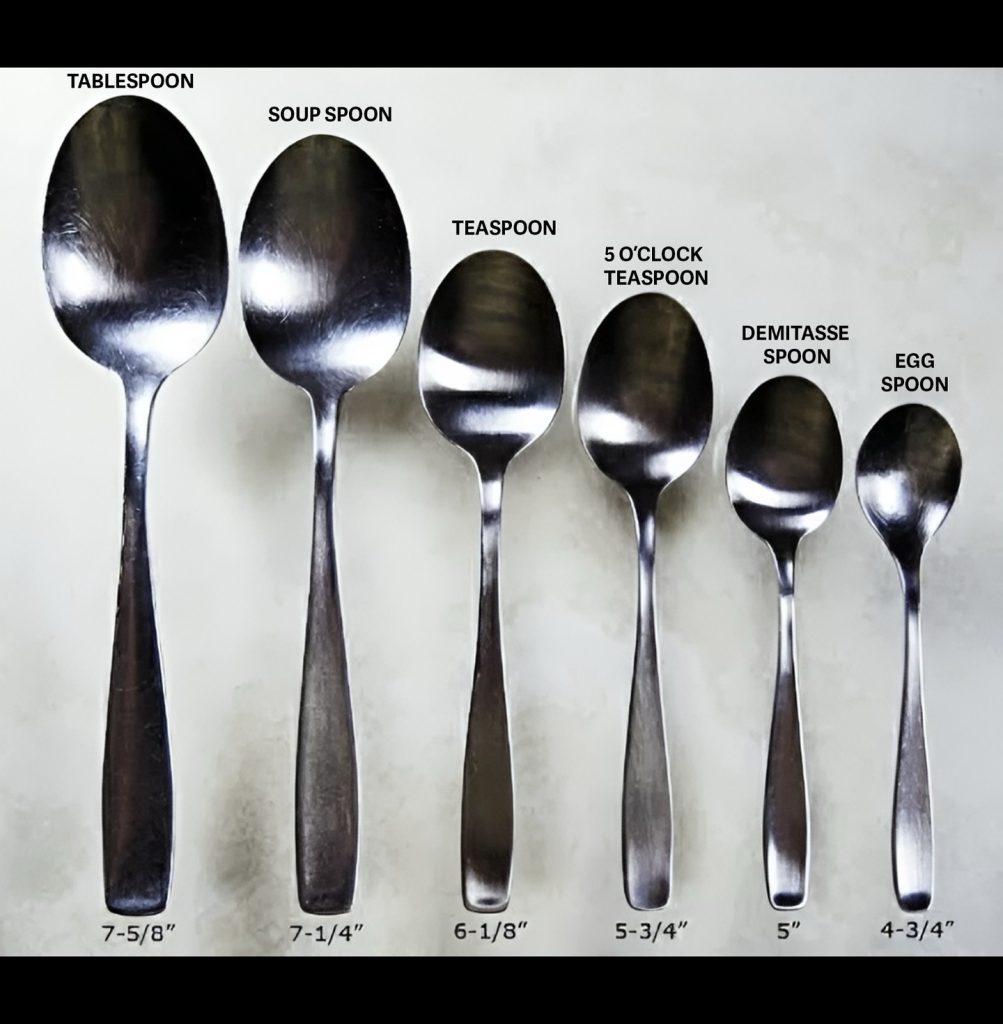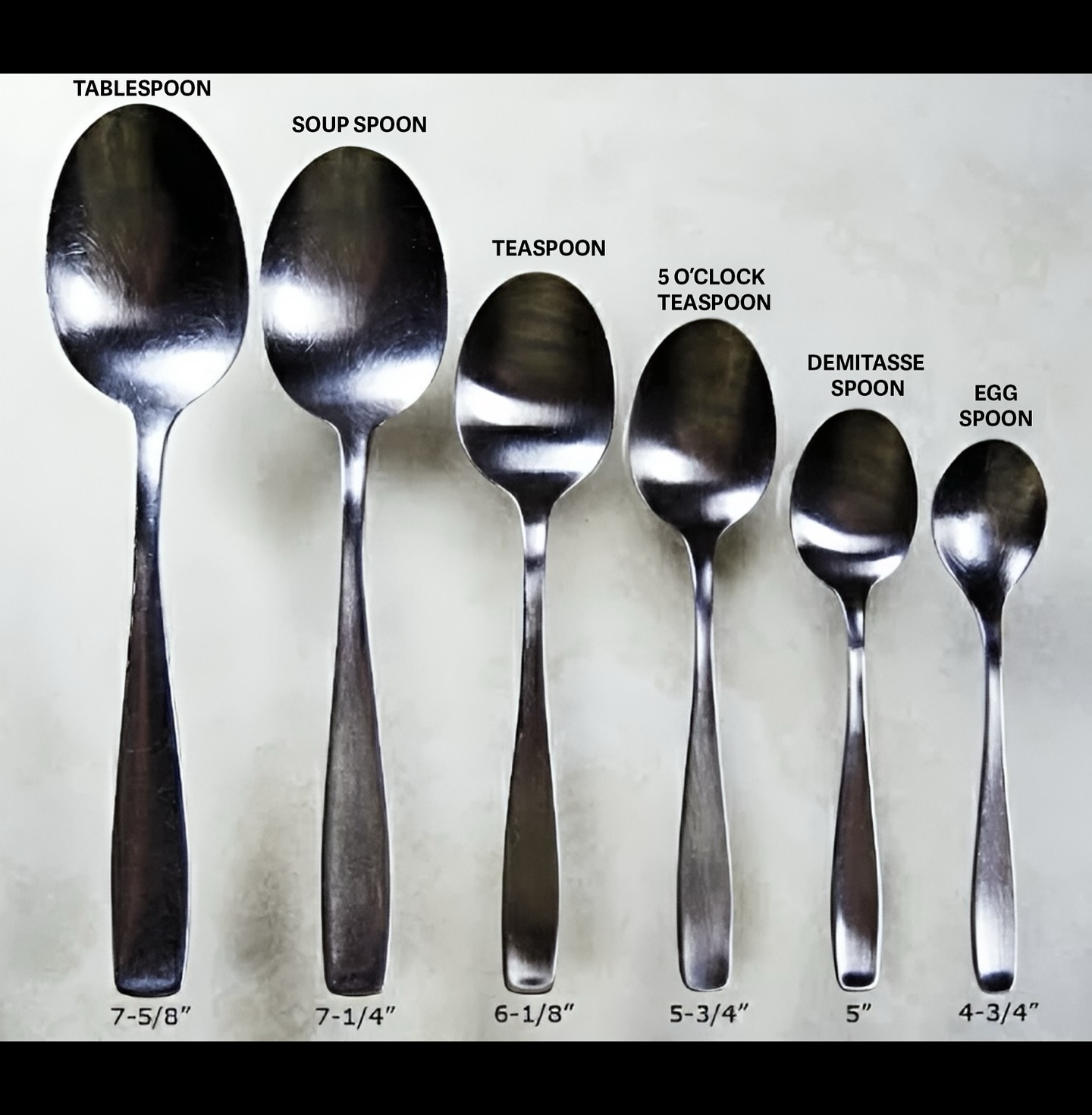There’s a Spoon for Everything — And Here’s Why Each One Exists, From Tea to Eggs
We barely think about them. They sit in drawers, clink against plates, and disappear into the dishwasher without a second glance. But the humble spoon—yes, the spoon—is one of the most quietly brilliant tools in human history. And believe it or not, not all spoons are created equal.

Different types of spoons are designed with very specific functions in mind, and once you start noticing the small details, you’ll never look at your cutlery drawer the same way again. From the generous curve of a soup spoon to the delicate precision of an egg spoon, each one plays a different role in the way we eat, cook, and experience food. It’s like a little orchestra of shapes and sizes that most of us use without ever questioning. But every one of them has a reason.
Let’s start with the tablespoon. You probably know this one—it’s the workhorse. Large, deep, and solid, it’s used for serving, scooping, and measuring. In recipes, “1 tablespoon” is more than just a unit—it’s a decision. It holds about 15 milliliters of liquid, which is exactly three times the size of a teaspoon. Whether you’re spooning sauce onto pasta or measuring peanut butter for your protein shake, this one’s got your back.
Then there’s the soup spoon, slightly smaller but rounder in shape. Ever tried eating soup with a regular spoon? It spills, it splashes, it’s awkward. Soup spoons were designed for a reason. That wide, rounded bowl makes it easier to scoop up both broth and solid chunks without tilting the bowl. It’s not just about elegance—it’s function disguised as style. And let’s be honest, there’s something oddly satisfying about dipping that perfect circle of silver into a bowl of homemade soup.
Now let’s talk about spoons we barely notice. The ones that seem too small to matter—but they absolutely do.
The teaspoon, for instance, is a staple in every home. Used for stirring sugar into coffee or eating yogurt straight from the cup, it’s also one of the most common units in recipes. One teaspoon holds about 5 milliliters. That’s it. But those 5 ml can make or break a dish. Ever added a teaspoon of salt when you meant a tablespoon? You’ll never forget that mistake.
But then there’s its cousin: the 5 o’clock teaspoon. It sounds like something fancy out of a royal tea party—and in a way, it is. This spoon is almost the same size as a regular teaspoon but usually comes out when someone’s setting a table for afternoon tea. It’s lighter, sometimes more ornate, and often paired with fine china. While most of us just grab whatever’s clean, these were once symbols of manners and moment. The kind of thing you’d place next to a delicate teacup and a saucer stacked with biscuits.
Next up: the demitasse spoon. The name might sound a little over-the-top, but it literally means “half cup” in French. This tiny tool is used for espresso. Yes, that small shot of intense, rich coffee deserves its own spoon. Why? Because espresso cups are small, and regular spoons feel oversized and clunky. Demitasse spoons make the experience feel intentional, measured, and a little bit classy. Plus, they’re great for scooping out that last bit of tiramisu.
And then we come to the egg spoon—a surprisingly important tool in the world of traditional European breakfasts. This is the smallest of them all, designed specifically for eating soft-boiled eggs out of their shells. The narrow bowl and short handle make it perfect for scooping out every bit of egg without cracking or scraping. It’s not just about size—it’s about control. You get to feel the texture of the egg without overpowering it with a spoon too big for the task. It’s quiet luxury. Simple, thoughtful, and surprisingly satisfying.
In a world where everything is being modernized or simplified, it’s kind of beautiful that spoons haven’t really changed. They’ve stuck around for centuries, doing their job quietly and efficiently. And when you see them all lined up—from the tablespoon to the egg spoon—it’s like a timeline of human dining, a silent reminder that eating isn’t just about hunger. It’s about ritual. Design. And sometimes, love.
So the next time you pick up a spoon—any spoon—pause for a moment. Notice the shape. Think about what it’s built for. That’s not just a piece of metal. That’s the result of centuries of tiny decisions, made to make your meal just a little better.
Because, let’s face it—life is full of small details. And sometimes, the smallest spoon holds the biggest story.

Daniel Reed is a curious mind with a passion for breaking down how the world works. With a background in mechanical engineering and digital media, he turns complex ideas into easy-to-understand articles that entertain and inform. From vintage tools and modern tech to viral internet debates and life hacks, Daniel is always on the hunt for the “why” behind the everyday. His goal is simple: make learning feel like scrolling through your favorite feed — addictive, surprising, and fun.
